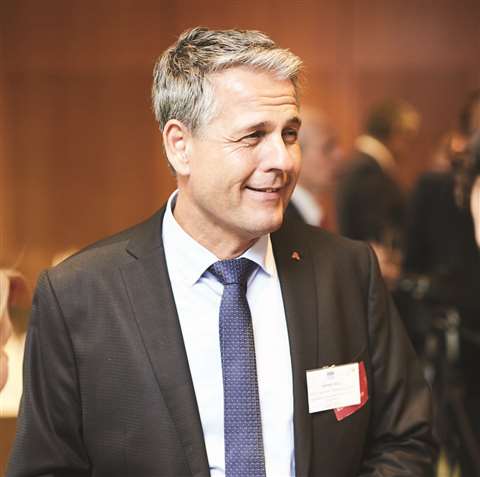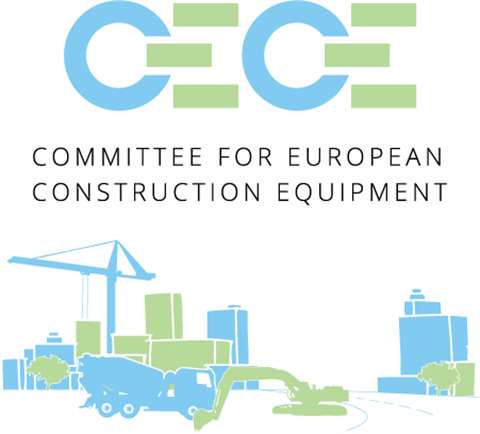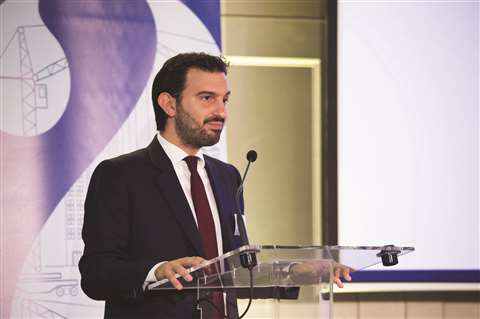CECE: Seeking a common voice
06 November 2017

As he comes to the end of his two-year presidency of CECE (the Committee for European Construction Equipment), Bernd Holz has a clear idea of how he sees the association, and how it should be perceived by the industry.
“What is important,” he said, “is that our members have a good feeling that CECE is useful and needed, and that we bring results which will help our members.
“The role of CECE is to be one common voice for all European associations.”
This has become easier over time – he pointed out that at one time there were three member associations in Italy alone.
“Now we have only one voice, otherwise it’s quite difficult,” he said.
It’s about bringing people together, setting up the necessary meetings and “working out what we really want to achieve”.
In recent years, he said, it has revolved around emissions standards, CO2, noise regulations and issues of that sort.
“This is running, but what comes next? Now we’re at the next big topic, which is digitalisation. So, at the moment, we’re working on what this means for the construction sector and for our members, and what we expect from the European Union – to follow up and find out what the benefits are for the customers, for the end users operating the machines. That’s what we are working on.”
He pointed out that CECE had a high level technical policy advisory group led by Wolfgang Burget, managing director of Liebherr EMtec, while the association has been working with management consultancy firm McKinsey & Co.
“We want to make a complete survey so we will know exactly what the needs of the OEM (original equipment manufacturer) are. That’s important.”
Digitalisation
CECE’s strategy for the digitalisation of the industry is to convince the European Union to have one common, open system, so that all machines have the same parameters, so that the machines can talk to each other on the jobsite.
“This is a must,” said Holz. “What we see at the moment is that some OEMs have their own system, but they are sealed so that they only work if you buy products from this supplier – otherwise it would not work. CECE and our members understand that this is the wrong approach.”
He said there was a common understanding in the technical group that open systems were necessary.
“The question is that some OEMs are far ahead and have already spent a lot to develop something in this regard. So the question is whether they are prepared to show their books, and show the others how they did it.
“This is a very good approach. Why not allow the others to cut and paste, to come to a solution quicker? Otherwise we are struggling for the next five years to do it again and again.”
And Holz felt that there was much to learn from the farming sector.
“Agricultural machines already have fixed standards, and they have a kind of cloud already, so machines are sending their data. We can use something similar for us, so my advice to my successor is for CECE to look more in the direction of what CEMA (the voice of the European agricultural machinery industry) has already installed.

“We should look how it could fit construction machines and then do a copy and paste.”
He said this would speed up the process of the construction machine industry developing its own systems.
He added that using the experience already gained by other associations and industries was a cleverer approach than doing it alone.
“A lot of things already exist in other industries,” he said. “You have only to adapt it and use it for your application.
“I think the goal must be to have digital processes which will support processes on jobsites to make them more efficient, quicker and sustainable. Then we have a perfect result – everything is monitored and documented, so we have the perfect road, the perfect jobsite, whatever.”
Holz said he strongly believed that the digital solution could help, but pointed out that there was still a great deal of manual work on a jobsite, with much of it achieved in the same way as 25 years ago.
He felt that in some regard, the construction business and the customer – contractors – could be a little old fashioned, and this needed to be changed through education.
Holz admitted that in the second year of his presidency, he “had more fun” than in the first.
“It took me quite a time to understand how CECE functions internally,” he said. “It’s important to have a good relationship with stakeholders – for example, exhibitions. So we set up a relationship with Bauma Munich, for example.”
He said CECE was close to all the exhibitions because it could meet many of the OEMs there, “and we can support the exhibitions, so that is a nice relationship”.
CECE’s internal meetings and the like have been structured to be more efficient, “so that we make decisions and not have endless discussions – that was something I investigated when I started”.
One big topic that CECE has continued to work on is attracting young talent to the industry. Work has started on this, but Holz admitted that there was more to do.
“And then, in between, I was forced to look for a new secretary general,” he laughed.
Riccardo Viaggi was appointed secretary general earlier this year, replacing Sigrid de Vries who stepped down at the start of 2017.

Viaggi was formerly secretary general of the European Builders Confederation (EBC), taking up that role in 2009. In that role, he was representing Europe’s micro, small and medium-sized construction enterprises from the 20 affiliates and partners in Brussels.
More Lobbying
Holz said that with Viaggi on board, he felt it would be possible to make CECE more visible and to do more lobbying. This has already begun with Holz meeting European Commission vice president Jyrki Katainen.
“It was a very good discussion, and that kind of event we want to continue to do,” said Holz.
He told Katainen that a coherent industrial policy could be vital for the future of construction equipment manufacturing in Europe, and also highlighted market surveillance, international trade and regulatory compliance.
At the meeting, Katainen confirmed the Commission’s willingness and commitment to support EU industrial competitiveness, and said he looked forward to receiving further input on policy measures and initiatives.
CECE’s position was that to help safeguard the competitiveness of the European industrial base, to create jobs and to instil new sustainable economic growth in Europe, the European manufacturing industry was requesting a holistic industrial policy strategy and action plan at EU level.
Holz said after the meeting, “I really appreciate the interest and the hands-on approach of Commissioner Katainen.
“I confirmed to him CECE’s readiness to deliver concrete examples of burdensome regulation, as well as new initiatives that we can put in place to reach the goal of 20% of EU GDP (gross domestic product) by industry.”
CECE said it was no secret that the initiative was an issue of controversy in the European Commission.
It said there was unanimous support, however, from Member States, expressed by the Competitiveness Council and endorsed by the Council Summit, and from several MEPs from all political groups in the European Parliament.
CECE’s main request was to give Europe’s manufacturing industry the means to increase industry’s share of European GDP to 20% by 2020.
It said the major fields of action defined included such issues as reducing the administrative burden of complying with EU legislation, ensuring fair competition through better market surveillance, seeking greater international policy alignment to avoid technical barriers to trade, access to finance, digitalisation and new business models or investment in skills and talents.
A total of 128 European trade associations representing European manufacturing industries, including CECE, issued a joint declaration backing this request.
This unity with other trade associations is another important plank of CECE’s strategy now.

Holz said, “We have also agreed – and we are working on this at the moment – to come closer to other associations. That means FIEC (The European Construction Industry Federation) for contractors, or the European Rental Association, because these are mainly the customer groups we are producing products for.
“We believe that by having one common voice and understanding the direction of the European Union, the Parliament, the commissioners, etc, it will help a lot instead of approaching them as only one single association.”
And he again pointed out that the next big issue would be digitalisation, which he described as a huge subject, and a buzz word, adding that it had to be broken down so it that it really made sense to the industry.
He said a digitalised jobsite led to less cost, less pollution because there would be fewer machines, and more efficiency.
“We have these different technical work groups, and in these workshops we have the specialists from the OEMs – the engineers from the R&D (research and development) departments – so I strongly believe we have set up very good teams to work exactly on these issues, and then come up with proposals, statements and papers we can send to the European Union saying what the sector needs, what we recommend should be done – this is working well.”
The meetings with MEPs will continue, said Holz. He highlighted Viaggi’s previous experience, pointing out what that could bring to CECE.
“He has been working in this business for 11 years and has set up an excellent network in Brussels with MEPs, etc, and is organising these things, bringing people together.
“I’m sure the meetings will continue, and then people will know more about CECE, and maybe we are able to build up a kind of relationship of better understanding. When there is a better understanding, the chance is much greater that they will consider what we have told them in the launching of the next regulations.”
He said he felt that there was not enough lobbying in the past. CECE had to reactivate this, he said, by investing more money to make CECE more visible, with websites and banners.
“We want to have a huge channel with films, etc – we want to reach our customers better and quicker.”
Too Short
And as his presidency draws to a close, Holz said that he had recognised that two years was probably too short a period in office to be truly effective.
“They should change the regulations so that the president can be there for four years,” he said. “If there is any outcome, any result after two years, it is hard to say what you have really achieved – we work on things but we are in this environment where you will not immediately get facts you can really measure.”
He agreed that sometimes things move slowly, but added “when the solution is clear, we start to get results. That’s what I see.
“But the CECE team is very good – it is a small team but very flexible, very powerful and with good team spirit. It’s also important that you have people in your team that have the willingness to change something and achieve something, and not do the job only to get their salary. This is not the case with my team, and I am really happy that my successor will have also a very good team beside him.”

So now Holz can return full time to concentrate on his role as managing director of Ammann Verdichtung in Germany, and Ammann sales director Europe North.
The progression is that there are two CECE vice presidents. The first vice president moves up to take the presidency, and the second vice president is promoted to first vice president.
The first vice president who will replace Holz is Enrico Prandini, managing director of Komatsu Italia Manufacturing, and he will be replaced by current second vice president Lars Göran Andersson, vice president key accounts at Volvo Construction Equipment.






